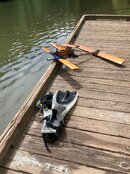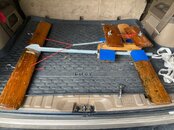A few years ago I remember a bunch of chatter about DARPA developing (or redeveloping) a device called PowerSwim that was based on the old Aqueon concept. It was supposed to be a kind of foil-based human powered DPV replacement for combat swimmers. There was all this talk about how great it was and they were going to rush it into production, but now I can't find any information on it that is less than 3 years old. I have sent DARPA a request to find out what happened to it, but have not heard anything back yet.
Does anyone out there know anything about what happened to PowerSwim?
Is any one else interested in lightweight PowerSwim style DPV alternatives to the heavy battery powered workhorses of industry standards?

Does anyone out there know anything about what happened to PowerSwim?
Is any one else interested in lightweight PowerSwim style DPV alternatives to the heavy battery powered workhorses of industry standards?









